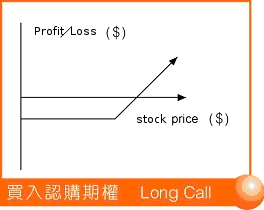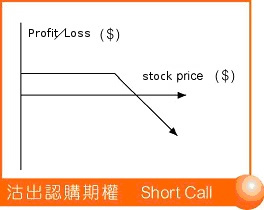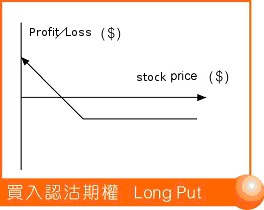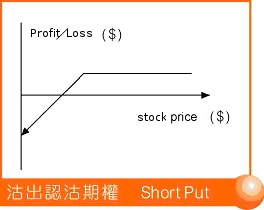-
Products
- Local Securities
- China Connect
- Grade Based Margin
- Stock Borrowing & Lending
- IPO
- Stock Options
- Foreign Stocks
- Unit Trust
- Local Futures
- Foreign Futures
- Forex
- Bullion
- Insurance Services
- Bond
- Monthly Investment Plan
- Mortgage
- Other Services
- Surplus Cash Facility
- Phillip Premier
- Latest Insurance Promotion<
- ETF
- Smart Minor (Joint) Account
- Capital Management
- Research
- Market Info
- Education Center
- Phillip Apps
- Customer Service
- About Us
-
Surplus Cash Facility
Introduction
Concept of option
Options are a right with deadline. The buyer pays an option premium for the rights granted by the contract. The seller earns the premium for the obligation to honour the contracts.
Seller(writer)---are obliged to honour the contracts if the holders choose to exercise.
Stock options’buyer and seller:
Investors can choose LONG (buy) or SHORT (sell) stock options
Buyer(holder)-- have rights but no obligation to exercise on or before the expiration date.
Seller(writer)---are obliged to honour the contracts if the holders choose to exercise.
Types of Options:
There are two types of stock options:
(Call Option)


| Holder | has rights to buy the stock at $90 (strike price) on or before October | Expect rising of stock price |
| Writer | is obliged to sell the stock at $90 if the holder exercises the contract | Expect not rising of stock price |
Put Option


| Holder | has rights to sell the stock at $20 (strike price) on or before October | Expect falling of stock price |
| Writer | is obliged to buy the stock at $20 if the holder exercises the contract | Expect not falling of stock price |
Stock option is a contract entered by and shared between two parties, a buyer and a seller. Everyone can long (buy) or short (sell) the contract. The buyer has the right, but not the obligation, to buy or sell the underlying asset at predetermined price on or by a predetermined expiry date. On the other hand, the seller has the obligation to buy or sell the underlying asset at predetermined price on or by a predetermined expiry date if the buyer exercises the contract. When you long an option, the purchase price is called the premium. If you short, you receive the premium.
Exercise / Assignment
The owner of an option contract has the right to exercise it, trading the underlying asset at the strike price, called “Exercise”. An option of a seller is exercised by owner, called “Assignment”.
Open a position / Close a position
An open position means that the trader holds a certain quantity of a given financial instrument. In order to close a position, the position must be bought or sold back to the market. So to close a long position, traders would sell the asset back to the market. And to close a short position, the trader would buy the asset. If you bought an option, you must use a "sell to close" order, which is akin to owning a stock that you then sell back into the market, in order to close out the position.
Characteristics of Stock Options
Flexible investment strategy
Stock options can assist investors to make profits in bullish, bearish or stagnant markets.
Hedging with options
Investors can restrict the downside while enjoying the full upside by hedging the underlying assets with options.
Leverage the return
Stock option is derivative, which leverages the investment return.
Low Transaction Fee
The transaction fee for stock option is cheaper than that for the same amount of stocks. Besides, stamp duty is exempted for stock option.
Top of Page
|
Please contact your account executive or call us now. Stock Options Department Tel : (852) 2277 6622 Email : option@phillip.com.hk Enquiry & Support Branches The Complaint Procedures |
About Us Phillip Securities Group Join Us Phillip Network Phillip Post Phillip Channel Latest Promotion 新闻稿 |
E-Check Login |
Investor Notes Free Subscribe |

|

